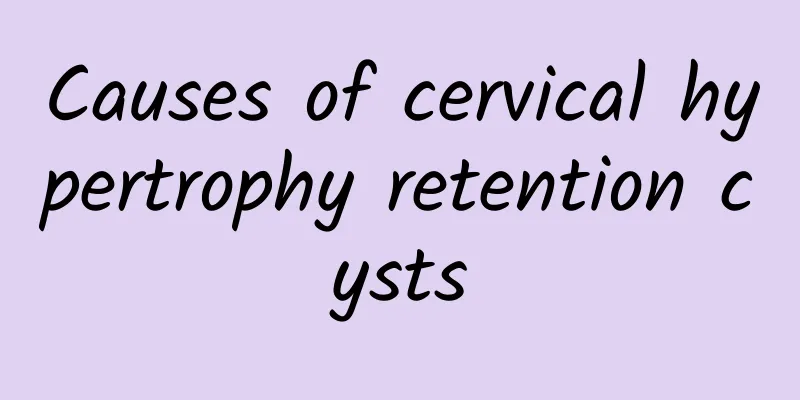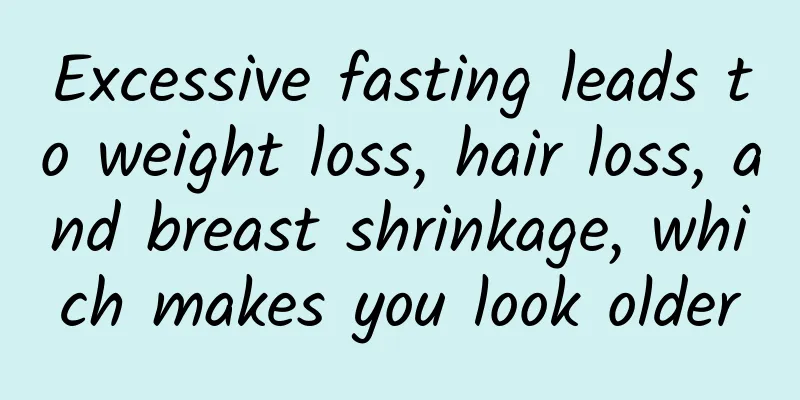Causes of cervical hypertrophy retention cysts

|
The treatment of cervical hypertrophy retention cysts should be based on the specific cause. Common causes include chronic inflammation, abnormal hormone levels, and cervical gland blockage. Chronic inflammation is the main cause of cervical hypertrophy retention cysts. Long-term inflammatory stimulation causes the cervical gland secretions to be unable to be discharged normally, forming cysts. Abnormal hormone levels may also cause increased cervical gland secretions, leading to cyst formation. Cervical gland blockage may be caused by factors such as cervical surgery, childbirth injury, or infection. 1. Chronic inflammation: Chronic inflammation such as long-term cervicitis and vaginitis stimulates the cervical glands, causing the secretions to accumulate and form cysts. Treatment requires anti-infection treatment for inflammation, such as the use of antibiotics such as metronidazole, clindamycin or local anti-inflammatory drugs such as Baofukang suppositories. At the same time, keeping the vulva clean and avoiding unclean sexual life can help prevent the recurrence of inflammation. 2. Abnormal hormone levels: Excessive estrogen levels may stimulate the secretion of cervical glands, leading to cyst formation. Treatment can be achieved by regulating hormone levels, such as using oral contraceptives or hormone replacement therapy, to help restore normal secretion function. Regular monitoring of hormone levels and avoiding the abuse of hormone drugs are also the key to prevention. 3. Cervical gland blockage: Cervical surgery, birth injury or infection may cause cervical gland blockage and cyst formation. Treatment can be done through surgery to clear the blocked glands, such as cervical transurethrography, laser therapy or cryotherapy. After surgery, local care should be taken to avoid infection and promote healing. The treatment of cervical hypertrophy retention cysts needs to be combined with specific causes and targeted measures should be taken. Chronic inflammation requires anti-infection treatment, abnormal hormone levels require hormone regulation, and cervical gland blockage requires surgical dredging. Regular gynecological examinations, early detection and treatment of related diseases can help prevent the formation and recurrence of cysts. |
<<: How is the effect of interventional embolization treatment for adenomyosis?
>>: What are the causes of amenorrhea?
Recommend
What harm will cervicitis bring to women? How should women prevent cervicitis?
Everyone knows that many female friends now suffe...
What is premature ovarian failure?
The ovaries are important reproductive organs for...
Do you have symptoms of anemia, amenorrhea, and hematuria?
Anemia, amenorrhea, and hematuria are three diffe...
What medicine should women take for pelvic peritonitis
Pelvic peritonitis causes very serious distress t...
Women should know about the symptoms of uterine fibroids
In our lives, various gynecological diseases are ...
What are the dangers of threatened abortion surgery?
Threatened abortion surgery is particularly harmf...
Three causes of cervicitis
Cervicitis is one of the most common diseases amo...
What are the symptoms and treatment of pelvic inflammatory disease?
What are the symptoms and treatments of pelvic in...
Common treatments for endometriosis
I believe that many women have gynecological dise...
How to rule out ectopic pregnancy? See individual symptoms
The probability of ectopic pregnancy in recent ye...
Let's take a look at the four major factors that cause dysmenorrhea in women
Everyone has heard of dysmenorrhea. But how much ...
"Qi" moves fat away! Eat onions to supplement nitric oxide
Can nitric oxide (NO) also help with weight loss?...
Cost of recovery from cervical precancer
How much does cervical precancer surgery cost? Su...
The first sure-fire way to lose weight: Tryptophan foods control appetite
Still playing tug of war with the number on the s...
Which is more harmful to the body, medical abortion or surgical abortion? Two common problems after medical abortion
Giving birth is a very happy thing for women, but...









